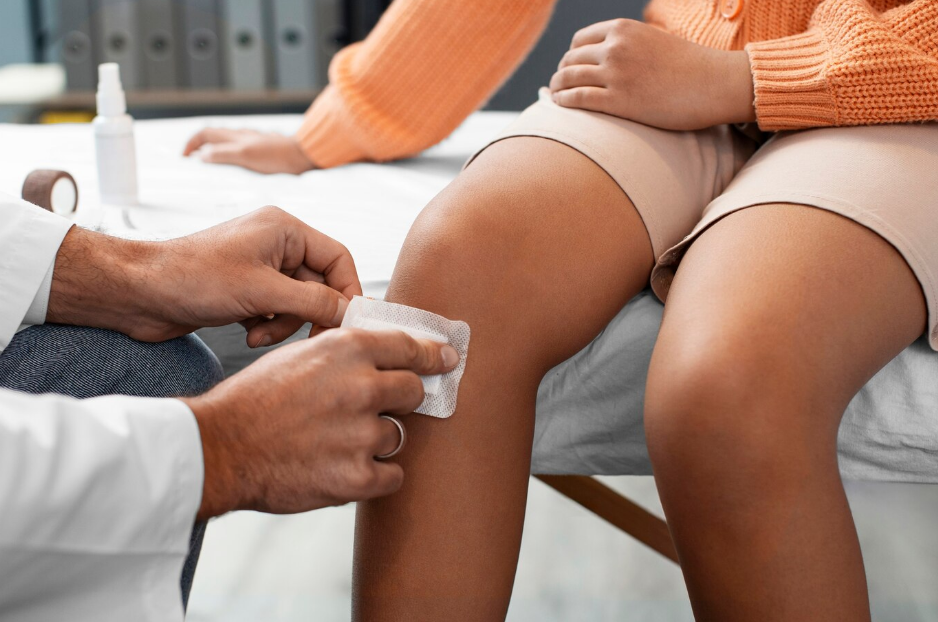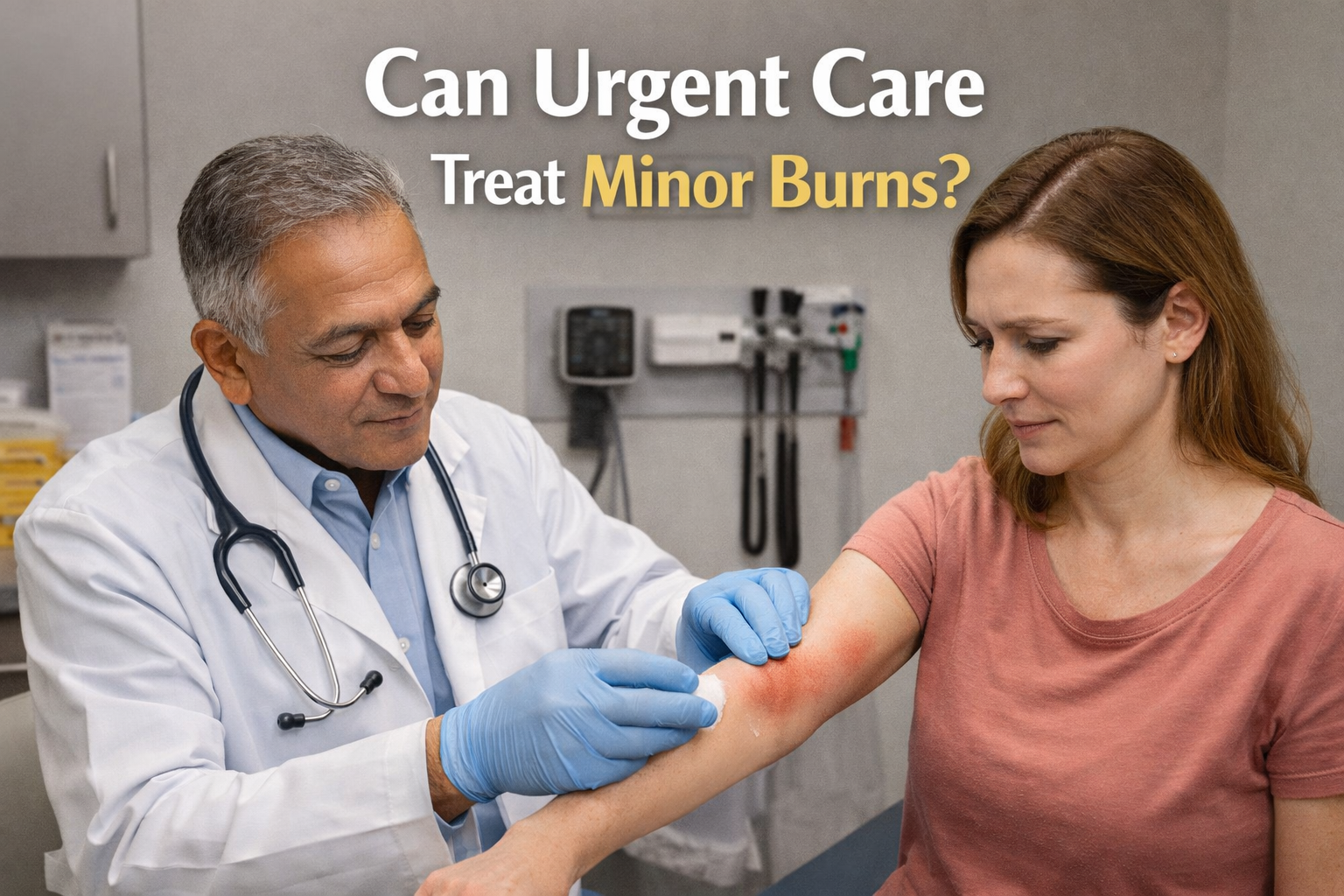Lacerations refer to a common injury that is caused by cuts, rips, or damage to the skin. Although some of them demand medical treatment, others can be relatively treated at home without even stitches. Knowing how to care for a laceration, it is possible to prevent infection as well as to minimize scarring and enhance the process of healing. This guide will take you through the process of caring for the non-stitched lacerations through evidence-based procedures as well as safe home procedures.
What is a laceration?
A laceration is a type of wound in which the skin is torn, cut by a sharp object, or hit by an impact or an accident. Medically, it is a tear of the skin that can be superficial or deep, reaching the body beneath the skin (fat or muscles). Lacerations break the skin barrier area, unlike a surface tear called an abrasion or a bruised area called a contusion, which does not usually have any bleeding.
It can be anything, varying between a laceration as common as a paper cut or as bad as a deep gash near a sharp edge. The depth and severity can be determined accordingly by knowing how to evaluate it.
Understanding Superficial vs. Deep Lacerations
Lacerations are categorized by depth and severity:
Superficial lacerations are superficial lesions that are restricted to the outermost skin layer. They are usually shorter than a couple of centimeters, are not gaping, and do not actively bleed when simple pressure is applied.
Deep lacerations penetrate various layers of skin and possibly muscles, tendons, or nerves. These normally need stitches, staples, or even surgery.
The often treated superficial lacerations do not require stitches, so long as it is cleaned up and treated correctly, but this can be done on areas such as the forehead, cheek, or even the leg.
How to Tell if a Laceration Needs Stitches or Not
One of the most common questions in first aid is: Does this cut need stitches? Here are indicators that stitches are likely not needed:
- The cut is shallow (less than ¼ inch deep).
- The wound is clean and not jagged.
- Edges of the skin can naturally align when gently pressed together.
- Bleeding stops within 10 minutes of firm pressure.
- The wound is not over a joint or an area that stretches frequently.
However, always err on the side of caution if you’re unsure, especially with children or facial wounds.
Cuts Near the Eye or Forehead: When to Worry
The face is also prone to a powerful supply of blood, which makes the eyes look alarming. Not all the cuts under the eye or on the forehead are stitched.
Small lacerations in these regions that do not open widely and cease bleeding soon can be addressed by a wound-closure strip or by skin glue. Nevertheless, when the eyelid is involved, there is embedded debris in the cut, or the cut is already bleeding, it is advisable to see a medical practitioner.
Look (no pun intended) out for any signs of swelling and development of a black eye on him or her and changes in vision—do not leave this unaddressed.
When to Call a Doctor or Visit the ER
Even a small laceration can pose a risk if it’s improperly treated. You should seek medical help if:
- Bleeding continues beyond 10–15 minutes.
- The wound exposes fatty tissue or muscle.
- It’s caused by a dirty or rusty object.
- There’s debris embedded that you can’t remove.
- Redness, pus, or warmth spreads around the wound (infection signs).
- The cut is from an animal or human bite.
Children’s cuts should always be monitored more closely, especially if they’re near the face or joints.
How to Care for a Laceration Without Stitches
The minor cuts that are not in need of stitches can heal perfectly with proper self-care. This is how you can safely go about handling them:
Clean the Wound Thoroughly
Wash the area with warm water and soft soap. Do not use aggressive antiseptics such as hydrogen peroxide or iodine because it can destroy healthy tissue as well as delay healing. Use the sterilized tweezers to get rid of any dirt or debris.
Stop the Bleeding
Press firmly yet not too hard with sterile gauze or cloth. Bleeding may also be minimized by elevating the injured part.
Close the Wound with Steri-Strips or Adhesive Glue
When the edges of the wound are aligned, then the wound can be closed by skin adhesives, butterfly bandages, or Steri-Strips. These non-invasive closures are similar to sutures and make the skin heal within less time and produce less scarring.
Skin glue is more useful in small cuts that are on the face, fingers, or head.
Apply a healing ointment.
On taking down, it should be covered with a thin coat of petroleum jelly or an antibiotic ointment to keep the dressing free and aid healing.
How to Handle Lacerations in Children
Children are prone to minor injuries and scrapes. But how do you know if their laceration can be treated at home?
Check for:
- Skin separation or gaping edges
- Cuts longer than half an inch
- Bleeding that won’t stop within 10 minutes
- Cuts near joints or on the face
If none of these apply, you can likely treat your child’s laceration without stitches using gentle cleaning, skin closure strips, and consistent dressing changes.
Treating Scalp and Forehead Lacerations at Home
The scalp bleeds heavily, even with minor injuries. If the laceration is small, not gaping, and bleeding is controllable, home care is possible.
- Clean the area using sterile saline or water.
- Part the hair and apply gentle pressure until bleeding stops.
- Use a skin adhesive or gauze with a non-stick bandage.
- Monitor for swelling, dizziness, or excessive bruising.
Scalp wounds often heal quickly due to rich blood flow—just ensure cleanliness and watch for signs of infection.
Laceration vs. Contusion vs. Abrasion: Key Differences
Understanding wound types helps determine treatment:
- Laceration: A cut or tear in the skin, usually from trauma or a sharp object.
- Contusion: A bruise, caused by blunt force, with no skin break.
- Abrasion: A scrape or rubbing injury that removes the skin’s top layer.
Only laceration repairs in Las Vegas involve actual breaks in the skin. A proper diagnosis leads to the right treatment and avoids unnecessary stitches.
Healing Time for Lacerations Without Stitches
Most minor lacerations heal within 7 to 10 days. Factors that affect healing include
- Wound depth and location
- How well it’s cleaned
- Whether infection occurs
- Age and health of the person
Keep the wound clean and covered, avoid picking at scabs, and protect it from UV exposure to reduce scarring.
Infection Signs to Watch For in Superficial Cuts
Even minor lacerations can become infected. Warning signs include:
- Redness that spreads
- Warmth or throbbing pain
- Yellow or green discharge
- Fever or swollen lymph nodes
Clean the wound daily and change the bandage if it gets wet or dirty. If infection sets in, seek medical attention immediately.
Home Remedies and Alternatives to Stitches
You can support healing and reduce scarring without sutures by using
- Medical-grade honey for its antibacterial properties
- Aloe vera gel to reduce inflammation
- Silicone scar sheets after wound closure
- Over-the-counter adhesives like DermaBond or New-Skin
Always use these remedies on clean, minor wounds—never deep or infected cuts.
Risks of DIY Stitches at Home
Some online videos show people attempting to suture their wounds. This is not recommended. Risks include:
- Infection from unsterile tools
- Improper closure leading to scarring or poor healing
- Trapping bacteria under the skin
- Delayed medical treatment in serious cases
Instead, opt for proven closure methods like butterfly closures or medical-grade glue.
Wound Dressing Tips for Faster Recovery
- Use non-stick dressings or sterile gauze pads.
- Secure with breathable tape or a bandage.
- Change the dressing daily or anytime it gets wet.
- Apply thin layers of ointment to keep the wound moist and encourage new tissue growth.
A well-maintained wound heals faster and with less risk of infection.
Conclusion
A great portion of lacerations, particularly those that are superficial and presented, can heal beautifully at home without stitches. Applying proper first aid (cleaning, closing, and protecting the wound) will help you prevent useless visits to an ER and still have great healing results.
When you feel uncertain about a cut or the way to treat it, go to a healthcare provider. Doing something early but in the proper way is all that is needed. To schedule your appointment with the highest standard of care, visit Sahara West Urgent Care on our website, where you can also explore more informative blogs.
Frequently Asked Questions
What’s considered a superficial laceration?
A shallow cut that doesn’t penetrate deeply or gape open. These usually stop bleeding quickly and can be treated at home.
Can I use super glue to close a cut?
Medical-grade skin glue can be safe for minor cuts, but standard household glue is not sterile or recommended.
Does a 1 cm cut need stitches?
Not necessarily. If the edges come together easily and bleeding is controlled, you can treat it without stitches.
How long does it take for a small laceration to heal?
Most minor cuts heal within 7–10 days if cleaned and cared for properly.
What are the best alternatives to stitches?
Steri-strips, skin adhesives, butterfly closures, and proper bandaging are effective alternatives for minor lacerations.





